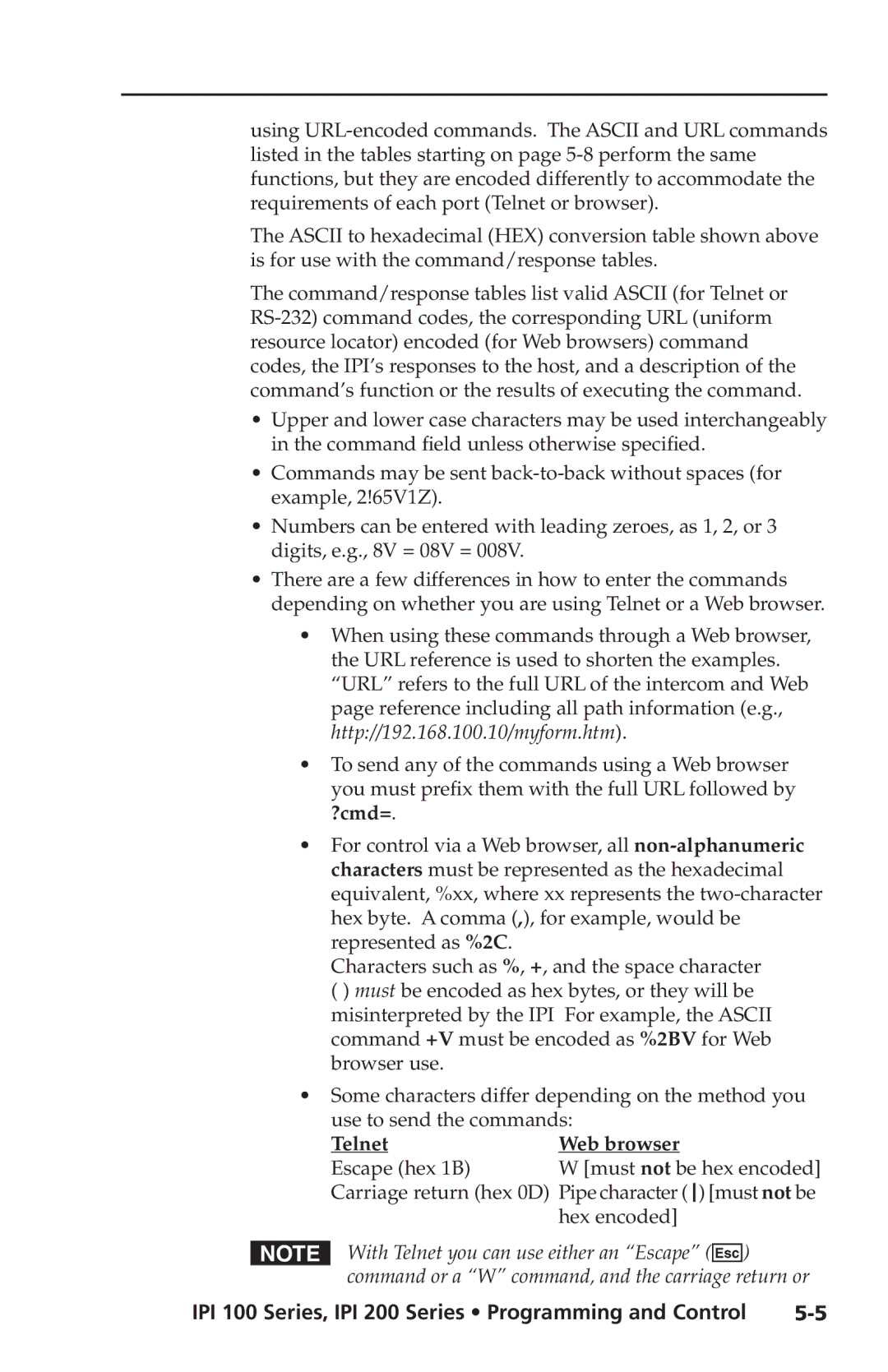using
The ASCII to hexadecimal (HEX) conversion table shown above is for use with the command/response tables.
The command/response tables list valid ASCII (for Telnet or RS‑232) command codes, the corresponding URL (uniform resource locator) encoded (for Web browsers) command codes, the IPI’s responses to the host, and a description of the command’s function or the results of executing the command.
•Upper and lower case characters may be used interchangeably in the command field unless otherwise specified.
•Commands may be sent
•Numbers can be entered with leading zeroes, as 1, 2, or 3 digits, e.g., 8V = 08V = 008V.
•There are a few differences in how to enter the commands depending on whether you are using Telnet or a Web browser.
•When using these commands through a Web browser, the URL reference is used to shorten the examples. “URL” refers to the full URL of the intercom and Web page reference including all path information (e.g., http://192.168.100.10/myform.htm).
•To send any of the commands using a Web browser you must prefix them with the full URL followed by
?cmd=.
•For control via a Web browser, all
Characters such as %, +, and the space character ( ) must be encoded as hex bytes, or they will be misinterpreted by the IPI For example, the ASCII command +V must be encoded as %2BV for Web browser use.
•Some characters differ depending on the method you use to send the commands:
Telnet | Web browser |
Escape (hex 1B) | W [must not be hex encoded] |
Carriage return (hex 0D) Pipe character () [must not be hex encoded]
NWith Telnet you can use either an “Escape” (E) command or a “W” command, and the carriage return or
IPI 100 Series, IPI 200 Series • Programming and Control |
